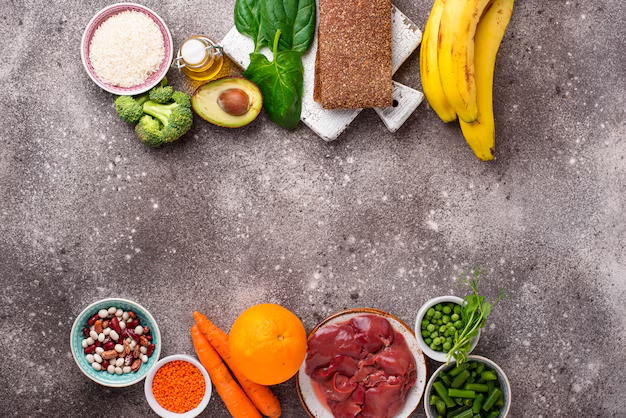Navigating the Dietary Maze: Foods to Avoid with Gouty Arthritis
Living with gouty arthritis can be a complex journey, marked by sudden flare-ups and persistent joint pain that can impact your quality of life. Understanding which foods might trigger these discomforts is crucial in managing this condition. Gout is a type of arthritis characterized by high levels of uric acid in the blood, leading to the formation of painful crystals in the joints. Fortunately, dietary choices can play a significant role in controlling gout symptoms, and knowing what to eat — and what to avoid — can make all the difference.
🍽️ Understanding Gouty Arthritis and Diet
What is Gouty Arthritis?
Gouty arthritis is a form of arthritis caused by the accumulation of uric acid crystals in the joints. Uric acid is a waste product in the body that is normally excreted through the urine. However, when produced in excess or not sufficiently excreted, it can lead to painful crystals forming in the joints, most commonly affecting the big toe, knees, and wrists.
The Role of Diet in Gout Management
Diet is a critical aspect of managing gout. Certain foods are high in purines, which the body breaks down into uric acid. Thus, consuming foods rich in purines can increase uric acid levels and potentially trigger a gout attack. On the flip side, understanding and choosing foods low in purines can help maintain optimal uric acid levels and alleviate symptoms.
🚫 Foods to Avoid with Gouty Arthritis
To manage gout effectively, you may need to reconsider your consumption of certain purine-rich foods and beverages. Here's a detailed look at which items to avoid:
1. Red Meat
Red meat, particularly beef, lamb, and pork, is high in purines. Opting for lean cuts of meat occasionally is advisable, but frequent consumption can spike uric acid levels.
2. Organ Meats
Organ meats like liver, kidneys, and sweetbreads contain high purine levels and should be avoided. These meats can significantly contribute to increased uric acid production.
3. Seafood
Certain types of seafood are known for their high purine content. Avoid the following to help prevent gout flare-ups:
- Anchovies
- Sardines
- Mussels
- Scallops
- Trout
- Mackerel These seafood items are particularly rich in purines and can raise uric acid levels in the blood.
4. Sugary Foods and Beverages
Sugar-sweetened foods and beverages, including sodas and high-fructose corn syrup products, can contribute to higher uric acid levels. Limiting intake of sweetened items can be beneficial in managing gout.
5. Alcohol
Alcohol, especially beer and liquor, can increase uric acid levels. Beer, in particular, is high in purines. Drinking alcohol can trigger gout attacks and should be consumed in moderation or avoided.
6. Processed Foods
Processed foods often contain ingredients that can elevate uric acid levels, such as refined sugars and high-fructose corn syrup. These items can exacerbate gout symptoms due to their inflammatory properties.
7. High-Purine Vegetables
While vegetables are generally a healthy choice, some contain more purines than others. Vegetables such as asparagus, spinach, and cauliflower have higher purine levels and should be consumed with caution.
🥦 Foods to Eat with Gouty Arthritis
While avoiding certain foods is important, it is equally essential to incorporate beneficial foods into your diet that may help reduce uric acid levels and alleviate symptoms.
1. Low-Fat Dairy Products
Low-fat and fat-free dairy can lower uric acid levels. These include foods like yogurt and skim milk, which are excellent additions to a gout-friendly diet.
2. Whole Grains
Whole grains such as oats, brown rice, and whole-grain bread are good sources of nutrients and can help manage gout by providing fiber without contributing to high uric acid levels.
3. Fruits
Fruits, particularly cherries, may help reduce uric acid levels and the risk of a gout attack. They contain antioxidants and compounds that have an anti-inflammatory effect.
4. Vegetables
Most vegetables are low in purines and can be consumed freely. Options like leafy greens, bell peppers, and squash offer essential nutrients without contributing to raised uric acid levels.
5. Nuts and Seeds
Nuts and seeds like almonds and flaxseeds provide protein and healthy fats without high purine content, making them suitable for a gout-friendly diet.
6. Water
Staying well-hydrated is crucial in preventing gout attacks. Drinking adequate amounts of water helps flush out uric acid from the body.
🔄 Transitioning Your Diet for Better Gout Management
Adopting a Gout-Friendly Lifestyle
- Gradual Changes: Transition to a gout-friendly diet gradually to ensure a sustainable change.
- Moderation is Key: While some foods should be avoided, moderation can help prevent gout attacks without feeling restricted.
- Regular Exercise: Incorporate regular physical activity to maintain a healthy weight, which can help manage symptoms.
Consulting a Healthcare Professional
While dietary changes can significantly impact gout management, it is beneficial to consult a healthcare professional or a registered dietitian for personalized guidance tailored to your individual health needs.
📋 Summary and Key Takeaways
Here's a quick bullet-point summary for easy reference:
- Avoid: Red meats, organ meats, specific seafood, alcohol, sugary foods, and processed foods.
- Limit: High-purine vegetables, beer, and sweetened beverages.
- Incorporate: Low-fat dairy, whole grains, most vegetables, cherries, nuts, and plenty of water.
- Lifestyle Tip: Maintain a healthy weight and stay physically active to support overall health and gout management.
With mindful dietary shifts and an understanding of which foods to avoid and include, managing gouty arthritis becomes a more approachable task, potentially leading to fewer flare-ups and improved quality of life. Remember, every step towards a better diet is a step towards managing gout more effectively.

Related Topics
- a Septic Arthritis
- Are Bananas Bad For Arthritis
- Are Tomatoes Bad For Arthritis
- Can An Inflamed Nerve Cause Arthritis
- Can An Inflamed Nerve Cause Arthritis In Dogs
- Can An x Ray Show Arthritis
- Can Arthritis Be Cured
- Can Arthritis Be Reversed
- Can Arthritis Become Septic After Infection From Injection
- Can Arthritis Cause Numbness